Samuel Beckett’s play “Waiting for Godot” stands as a seminal work of 20th-century theater, renowned for its poignant exploration of the human condition. Set in a desolate landscape, the play presents an unending wait between two characters, Vladimir and Estragon, as they anticipate the arrival of a mysterious figure named Godot.
Amidst the existential absurdity, “Waiting for Godot” delves deep into a multitude of major themes that resonate with audiences, challenging their perspectives and raising profound questions.
This article aims to meticulously dissect and illuminate these themes, revealing the enduring relevance and intellectual brilliance of Beckett’s work:
The Absurdity of Existence

“Waiting for Godot” emerges from the realm of the absurd, showcasing the human experience in an unpredictable and chaotic world. Through the characters’ nonsensical conversations, illogical actions, and repetitive routines, the play underscores the inherent absurdity of their existence.
Estragon’s iconic line, “Nothing to be done,” encapsulates the characters’ perpetual struggle to find meaning and purpose in a seemingly purposeless world.
Read More: Stream of Consciousness into the Lighthouse by Virginia Woolf
The Quest for Meaning

At its core, “Waiting for Godot” is an existential exploration of the search for meaning in life. Vladimir and Estragon’s anticipation of Godot’s arrival becomes a metaphor for humanity’s innate yearning for significance and purpose. The play raises profound questions about the nature of existence, the existence of God, and the potential inherent meaninglessness of life itself.
As the characters grapple with these existential difficulties, the audience is compelled to reflect on their quest for meaning.
The Burden of Time and Waiting

Time plays a central role in the fabric of “Waiting for Godot.” As Vladimir and Estragon wait ceaselessly for Godot, who never arrives, the passage of time becomes a source of torment and monotony. The cyclic nature of their waiting emphasizes the repetitiveness and futility of human existence.
Beckett skillfully highlights the characters’ inability to escape the burden of waiting, thereby exposing the universal struggle of grappling with the passage of time and the fear of missed opportunities.
Isolation and Dependency

Vladimir and Estragon find themselves isolated in a desolate landscape, epitomizing the inherent human need for connection and companionship. Their codependent relationship becomes a microcosm of the broader human experience, exploring the delicate balance between independence and reliance on others for emotional sustenance.
By presenting characters trapped in their isolation, Beckett underscores the human longing for meaningful connections while highlighting the apprehension and vulnerability associated with true dependency.
The Duality of Hope and Despair
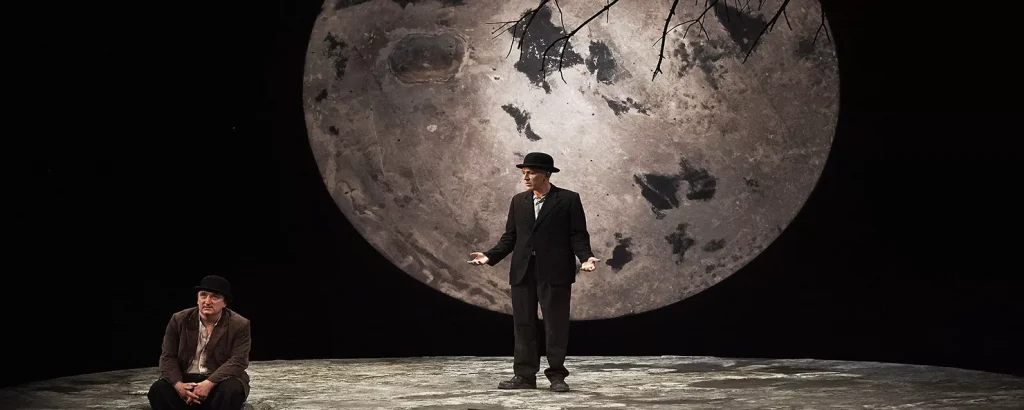
Despite their bleak circumstances, Vladimir and Estragon maintain a fragile sense of hope, anchoring their existence on the possibility of encountering Godot. However, their hopes are repeatedly dashed, leading to moments of profound despair and existential questioning.
Through this thematic exploration, Beckett challenges the audience to confront the nature of hope itself, the mechanisms by which it sustains individuals and the consequences of its potential futility in an uncertain and enigmatic world.
Language as an Inadequate Tool
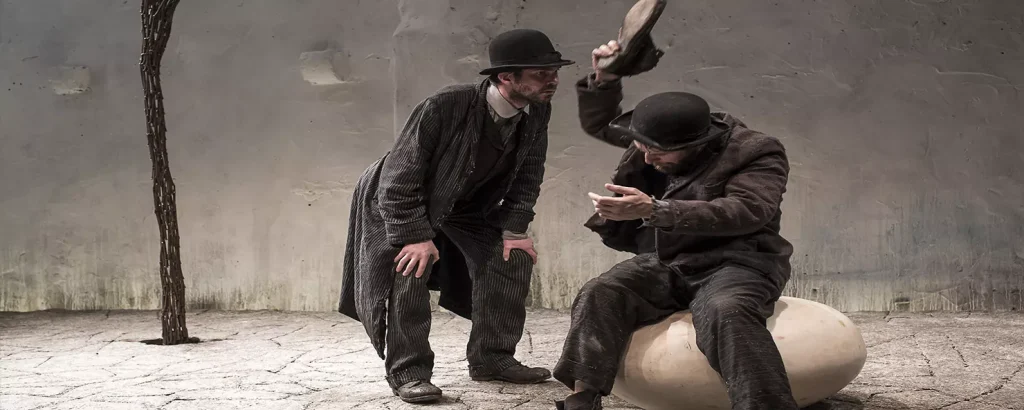
“Waiting for Godot” delves into the limitations of language and the complexities of effective communication. The characters’ fragmented and circular conversations highlight the ambiguity and inadequacy of language in expressing profound truths. Beckett presents a world where language fails to bridge the gap between individuals, showcasing the inherent challenges of human connection.
By scrutinizing the barriers of language, the play underscores the difficulty of genuine understanding and the existential isolation that often ensues.
Symbols in Waiting for Godot
Here are given the Symbols in Waiting for Godot:
The Tree – The Symbol of Barren Existence and Time’s Passage
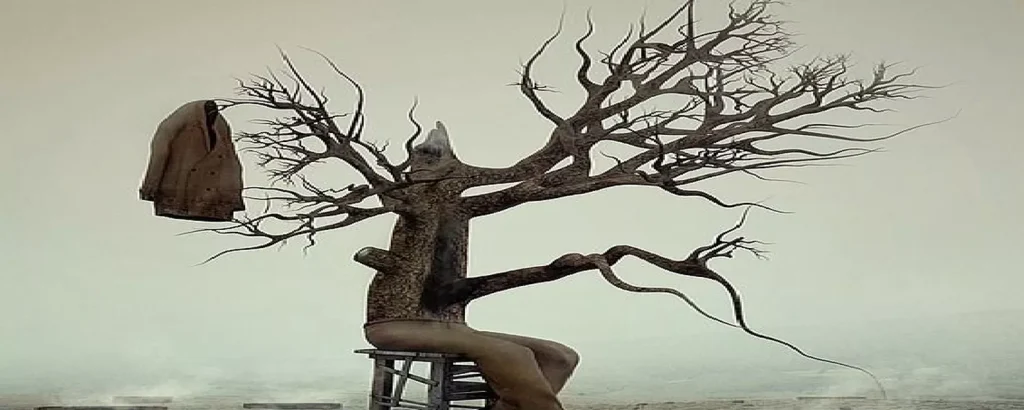
The tree in “Waiting for Godot” serves as a prominent symbol throughout the play, embodying various layers of meaning. Initially barren, it represents the barrenness and futility of existence. The characters, Vladimir and Estragon, find solace in its presence, even though it lacks leaves or fruit. The tree symbolizes endurance, hope, and the cyclical nature of life.
Its unchanged state echoes the characters’ entrapment and the monotony of their waiting. Additionally, the tree reflects the passage of time and the characters’ existential struggle in the face of an unchanging world.
Lucky’s Hat – Symbol of Power Dynamics and Oppression

Lucky’s hat, a significant symbol in the play, represents power and control. As a slave to Pozzo, Lucky wears the hat as part of his servitude. The hat symbolizes the hierarchical structure of society and the oppressive nature of power dynamics.
It highlights the absurdity of the character’s existence within a system that perpetuates inequality and subjugation. Lucky’s hat serves as a visual reminder of the characters’ submission to societal norms and their lack of agency.
The Bowler Hats – Symbol of Conformity and Societal Expectations

The bowler hats worn by Vladimir and Estragon are recurring symbols that carry multiple layers of meaning. The hats represent conformity and societal expectations. The characters’ attachment to their hats reflects their desire to fit into societal norms and expectations, despite the underlying absurdity and meaninglessness of their existence.
The bowler hats serve as a visual representation of the characters’ struggle to conform and their willingness to adopt prescribed roles. It highlights the tension between individuality and the pressure to conform to established societal structures.
The Boots – Symbol of Power and Authority
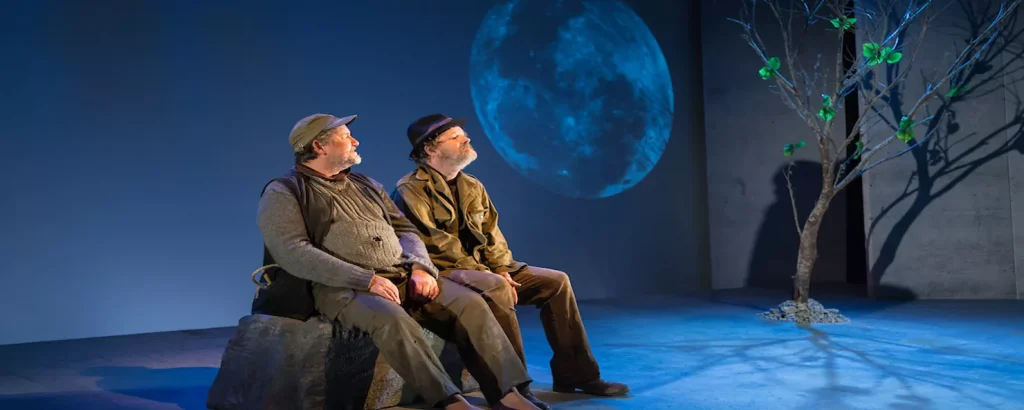
Boots are referenced throughout the play and hold symbolic significance. Boots symbolize power, authority, and control. Pozzo’s boots, in particular, exemplify dominance and privilege. The characters’ interactions with the boots emphasize the hierarchical power dynamics within the play.
The boots serve as a reminder of the character’s vulnerability and their subservient position within the societal structure. They also underline the arbitrary nature of power and the inherent inequalities present in human interactions.
The Estranged Country Road – Symbol of the Existential Journey
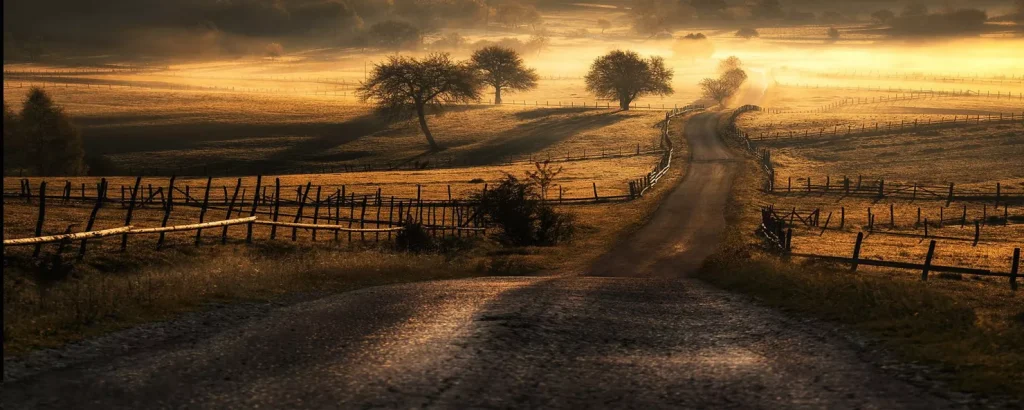
The country road in “Waiting for Godot” represents the characters’ existential journey. It stretches into an unknown and uncertain future, reflecting the search for meaning and purpose in life. The characters’ endless waiting on the road mirrors the human condition of seeking answers in an unpredictable and indifferent world.
The road serves as a symbol of the journey of self-discovery, questioning, and exploration that individuals undertake in their quest for understanding.
Wrapping Up
Samuel Beckett’s “Themes of Waiting for Godot” stands as an enduring masterpiece that continues to captivate audiences with its rich themes and thought-provoking narrative. Through its exploration of the absurdity of existence, the quest for meaning, the burden of time and waiting, isolation and dependency, the duality of hope and despair, and the limitations of language, the play compels individuals to reflect on the complexities of the human condition.
Beckett’s timeless work serves as a poignant reminder of the universal search for meaning amidst the enigmatic and unpredictable nature of life. “Waiting for Godot” challenges us to confront existential questions and find solace in the very act of questioning, ensuring its place as an indelible work of literary and theatrical significance.

